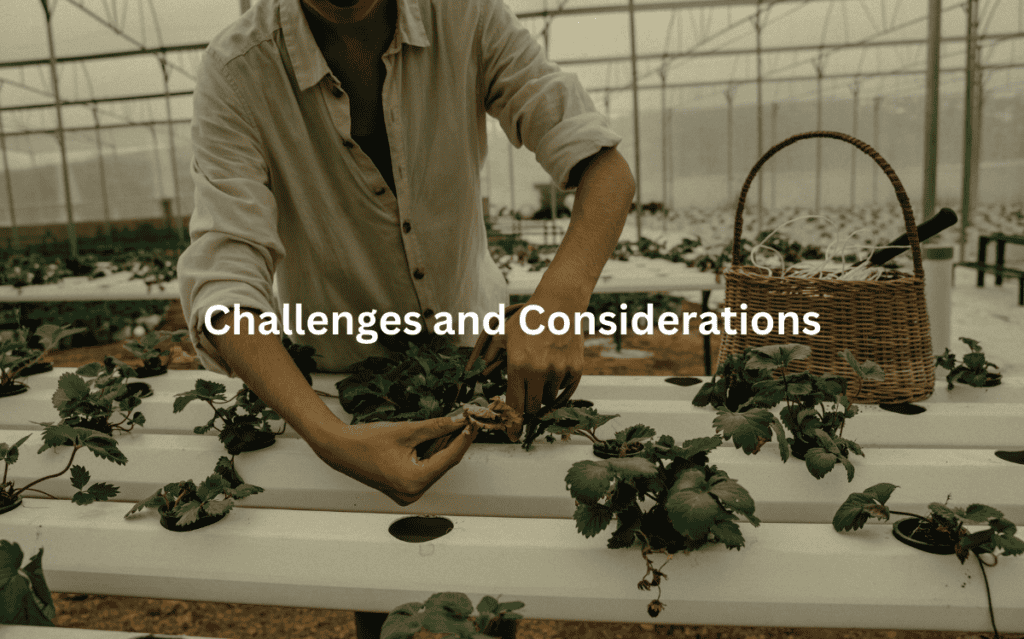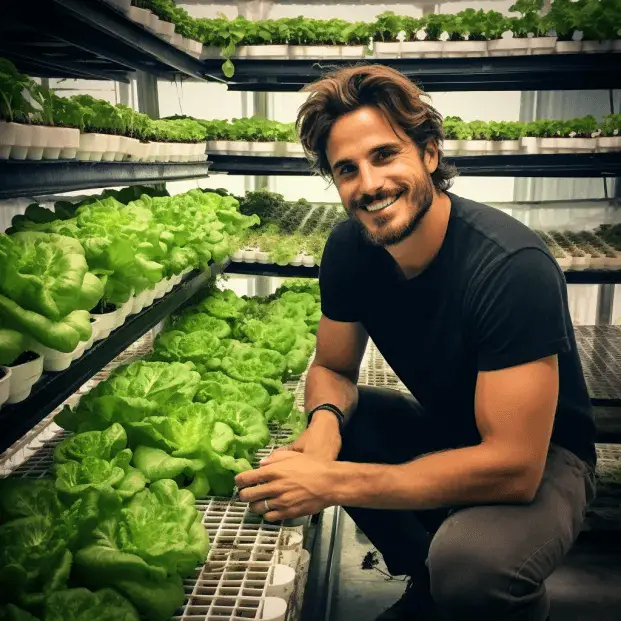In hydroponics, choosing the right grow media is crucial for water efficiency (1). Effective media holds moisture but also allows for drainage and aeration. This balance supports strong roots and optimal nutrient uptake, which directly influences plant health.
Common options include coconut coir, perlite, and rock wool, each with distinct properties affecting water retention. Understanding how these media interact with water can help growers make informed decisions. For those looking to enhance their hydroponic systems, exploring the nuances of water-efficient media is key. Keep reading to discover the best choices for your specific growing conditions.
Key Takeaway
- Water-efficient media can reduce water usage by up to 90% compared to traditional soil farming.
- Different media types offer distinct advantages, such as water retention and aeration.
- Proper selection and maintenance of hydroponic media are crucial for optimal plant health and resource sustainability.
Understanding Water-Efficient Hydroponic Grow Media
Sometimes when you step into a greenhouse, it’s like stepping into a different planet. The air hums differently. Roots stretch and coil through strange materials that don’t look like soil at all. They’re surviving (even thriving) without dirt, riding waves of mist, water, and whatever else growers dream up.
Key Properties of Effective Media
Growing without soil ain’t just about holding the plant upright. It’s about building a whole underground world. Water-efficient hydroponic grow media do that by holding onto what matters and letting go of what doesn’t (2).
Essential characteristics include:
- Water retention (20-30% of volume)
- Drainage speed (5-15 minutes)
- Air pockets (minimum 10% space)
- pH stability (5.5-6.5 range)
Critical Functions
Most media types need to handle three main jobs. First, they’ve got to hold enough water between feedings – coco coir can hold up to 8 times its weight. Second, they need good drainage to prevent root rot – perlite drains excess water in under 5 minutes. Third, they should last more than one growing cycle.
Basic requirements:
- Support root structure
- Allow nutrient flow
- Maintain moisture balance
- Stay chemically neutral
Pro tip: Watch your plants more than your meters. If leaves start drooping before the next watering, you might need media with better water retention. If roots look brown, you probably need better drainage.
Types of Water-Efficient Hydroponic Grow Media
Growing media’s changed a lot since the early days. What works depends on where you’re growing – a humid greenhouse in Tampa needs different stuff than an indoor setup in Detroit. Each media type brings its own quirks to the table.
Coco Coir
Coconut husks transformed into growing gold. The stuff’s naturally airy, holds water like a champ but won’t drown your roots. Most growers mix in some worm castings to boost the nutrient game. Watch the watering schedule though – top layers dry out faster than the bottom.
Benefits:
- Perfect for hot climates
- Gives roots plenty of breathing room
- Keeps temperature steady around roots
Rockwool
Think stone cotton candy that’s tough as nails. Made from melted rock spun into fibers, it holds water up to 90% of its volume. The downside? Manufacturing leaves a decent carbon footprint, and you can’t just toss it in the compost bin.
Best uses:
- Precise moisture control
- Steady root development
- Commercial greenhouse operations
Clay Pebbles (LECA)
These little brown balls might look basic, but they’re workhorses. They’re pH neutral and keep oxygen flowing to the roots. Most commercial growers use them in systems where water gets recycled. Plus, they last practically forever if you clean them right.
Works great for:
- Vertical farms
- Small urban setups
- Systems that reuse water
Pro tip: Check your media’s pH every two weeks, and trust your hands – sometimes feeling the moisture level tells you more than any meter will. If the plants look healthy, you’re probably doing just fine.
How Water-Efficient Media Work in Hydroponic Systems
It hits you when you first walk into a hydroponic farm—how clean it feels (3). No muddy boots, no cracked dirt. Just rows of plants drinking straight from the source. Water-efficient growing media types make this possible, acting almost like a sponge and a filter at the same time.
Moisture retention in media is the key. Media like cocopeat (known for its water-holding cocopeat properties) keep the root zone temperature steady, which keeps plants from stressing out. Perlite in growing media adds that little bit of air space roots crave. And then there’s the mushroom compost effects—good for organic matter in growing media, but sometimes tricky because it holds nutrients a little too well.
In a climate smart growing media setup, especially in closed-loop systems, the excess water doesn’t get lost. It drains into gutters, gets cleaned, and circles right back to the roots. This helps growers save up to 90% more water compared to outdoor farming.
(There’s a catch though: salt build-up happens if the media’s not flushed regularly.)
People picking growing media for hydroponics gotta think about:
- Climate-specific growing media needs (tropical, temperate, cold, arid)
- Root zone temperature control
- Soil moisture distribution
Practical tip: Always measure soil temperature effects and moisture content with a cheap sensor. Keeps problems small.
System Components Supporting Water Efficiency
Sometimes you have to squint to even notice the water working in a hydroponic system. That’s because it’s not splashing around—it’s creeping, soaking, disappearing under plants just right. Smart irrigation strategies for media make this happen.
Drip systems deliver water drop by drop—literally right onto the roots. No runoff, hardly any evaporation. Good ones might even adjust flow rates based on soil moisture distribution data.
Substrate bags (stuffed with drought-resistant growing media) lift the plants off the ground. Spacers make sure air can flow, reducing root rot risk. It’s almost like a tiny skyscraper system, but for lettuce.
Drainage gutters swoop underneath. They catch every drop that the plants don’t use. (Well, almost every drop—there’s always a little loss.) From there, water either loops back into the system or gets filtered and reused.
Components that matter most:
- Drip emitters sized to plant needs
- Substrate bags filled with peat-free growing media
- Gutters with slight slopes (gravity helps)
Some growers forget: the heat transfer in growing media can mess with water flow. Hot media dries out faster. So you gotta watch root zone temperature too. Good advice: use light-colored bags in hot climates. Reflects heat. Keeps water where it belongs.
Advantages of Water-Efficient Hydroponic Media
When you really watch plants grow in a hydroponic setup, you notice they don’t “fight” for water the way they do outside. They just…take it. Slow and steady. Water-efficient media makes that happen. The big number? Up to 90% water savings compared to field crops. That’s not a typo. Growing media for water conservation changes everything in drought-prone areas.
Keeping consistent moisture levels in media is key too. Materials like cocopeat and vermiculite mean growers don’t have to guess if plants are thirsty. (Big win for plant growth in varying climates.)
Other perks include:
- Lower disease risks (no soil, no soil diseases)
- Less need for pesticides
- Better root growth in different media types
Plus, many sustainable growing media now come from renewable growing media sources like recycled fibers or renewable coco husks. Better for the plants, better for the planet. Some media, like vermicompost benefits, also boost nutrient levels naturally. That’s double efficient—feeding and watering in one.
Tip to remember: always pair your media with the right irrigation system. Overwatering even “smart” media cancels out the benefits.
Challenges and Considerations

Nothing’s perfect. Even the best hydroponic media brings a few headaches. First problem? Salt build-up. Especially in cocopeat. Nutrients collect over time, and without a good flushing system, plants can get “burned” (even if you can’t see it at first).
Then there’s the big question: media selection. Growing media for cold climates might not work for tropical climates. (And vice versa.) Climate-specific growing media matters more than people think.
Maintenance also sneaks up on you. Some media need:
- Rinsing before first use (cocopeat, leaf compost in media)
- Regular cleaning or replacing
- Monitoring for soil microorganisms
Another thing: heat transfer in growing media isn’t always your friend. Some media heat up fast, messing with root growth. Root system architecture depends a lot on soil aeration and moisture content.
Poor media choices can mean weak roots and slow plant growth rate. Last piece of advice: start small. Test two or three different growing media types in your setup. Measure. Watch. Adjust. That’s how the pros do it.
FAQ
What are the best growing media types for water-efficient hydroponic systems?
The best growing media types hold water well without drowning the plants. Things like cocopeat properties and perlite in growing media do a great job. Some people also add leaf compost in media to help. These choices help keep moisture where roots can reach it but still let extra water drain out.
How does climate-specific growing media affect plant growth in hydroponics?
Plants grow better when the media fits the weather. If you live somewhere hot, growing media for tropical climates is best. If it’s cold, go for growing media for cold climates. Picking the right climate smart growing media keeps root zone temperature steady and helps roots grow strong.
What is the impact of soil temperature effects and heat transfer in growing media?
Soil temperature effects mean roots can get too hot or too cold. Heat transfer in growing media can cause plants to wilt if it’s too fast. That’s why using climate smart growing media and growing media temperature control helps roots stay comfy and healthy, even when the weather changes.
How does organic matter in growing media help water efficiency?
Adding organic matter in growing media, like mushroom compost effects or vermicompost benefits, makes media soak up water better. These natural things keep roots wet longer and give them food too. They help you grow stronger plants and use less water, which is good for sustainable farming.
Conclusion
To maximize water efficiency, growers must choose hydroponic media wisely. Considering factors like water retention, aeration, and sustainability can improve outcomes. Water-efficient media not only supports healthy crop growth but also conserves essential resources.
By selecting the right materials, growers can create more sustainable systems that optimize plant health while minimizing water wastage. It’s a significant step towards effective hydroponic practices. For more insights on making the best selection, keep reading.
Related Articles
- https://tophydroponicgarden.com/choosing-the-right-hydroponic-media/
- https://tophydroponicgarden.com/pros-and-cons-of-different-hydroponic-media/
- https://tophydroponicgarden.com/importance-of-ph-in-hydroponics/
References
- https://www.trees.com/gardening-and-landscaping/growing-media
- https://medium.com/global-climate-solutions/hydroponic-farming-water-efficiency-year-round-production-and-sustainable-urban-solutions-1ee4640a4996
- https://axaxl.com/fast-fast-forward/articles/going-green-with-hydroponics
Was this helpful?

I’m Barrie L., a passionate hydroponic gardening enthusiast dedicated to cultivating thriving, soil-less gardens. With a focus on all things hydroponic, I share my expertise on innovative growing techniques and sustainable practices through my blog, tophydroponicgarden.com. As a seasoned hydroponics specialist, my goal is to inspire and guide fellow gardeners in harnessing the power of water-based cultivation for bountiful and eco-friendly harvests. I’m also an author of the book “Hydroponics For Absolute Beginners: Your Step By Step Guide For How To Create An Hydroponics System At Home Without Soil, For Growing Vegetable, Fruit And Herbs.” which is sold on Amazon. Join me on a journey of redefining the way we cultivate plants, one nutrient-rich solution at a time. Happy growing!


